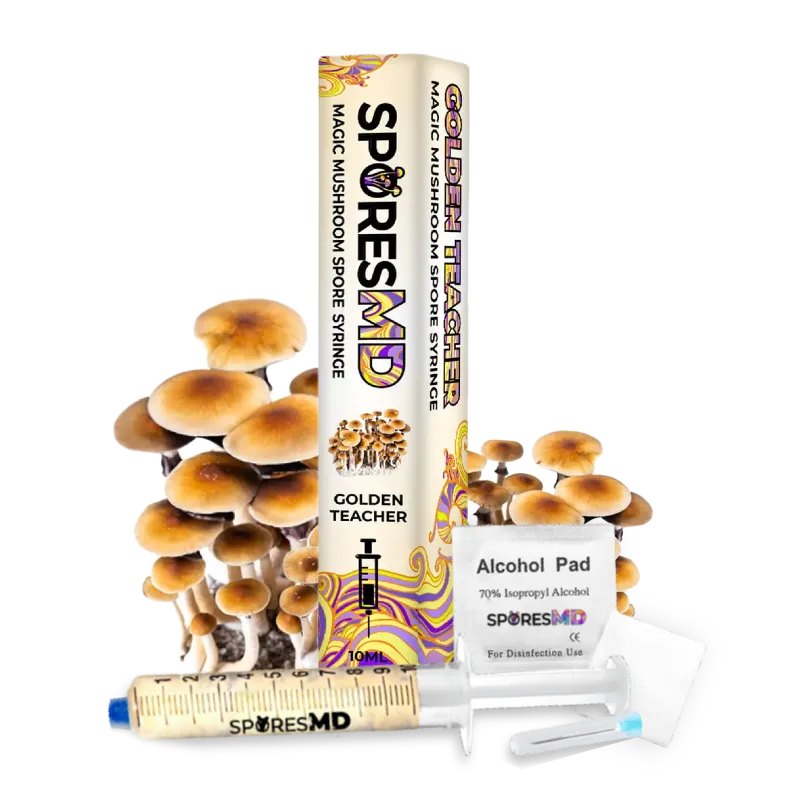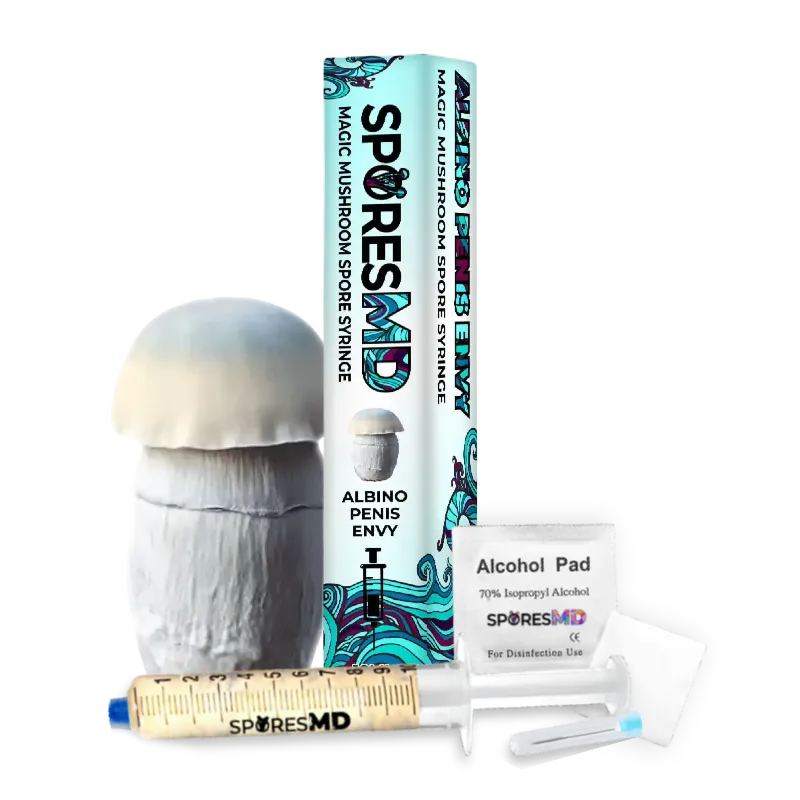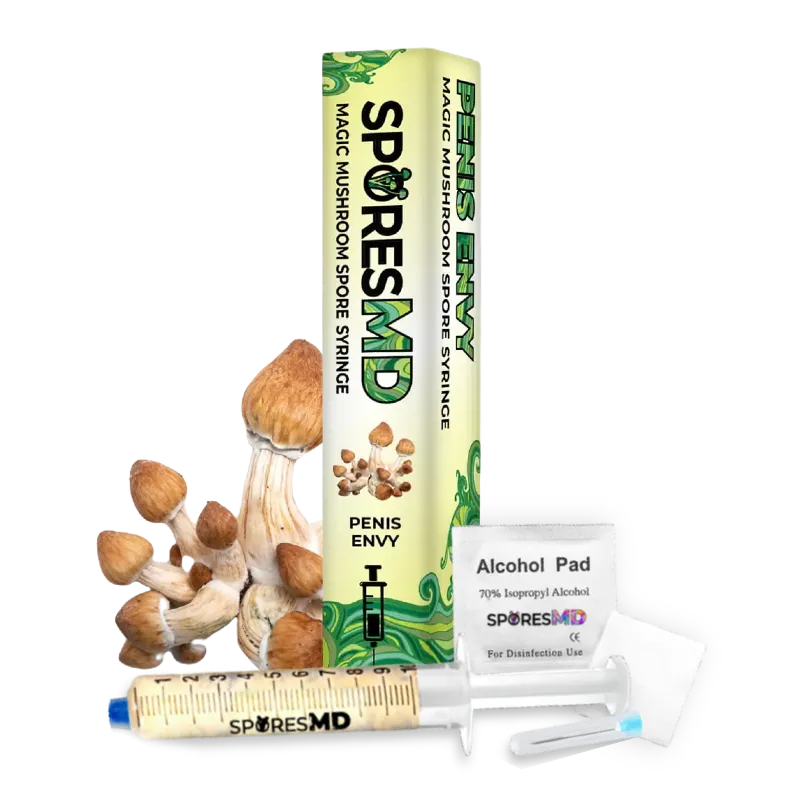Ever wondered about the life cycle of a mushroom? Those tiny, almost invisible particles they release are more than meets the eye. Welcome to the fascinating world of mushroom spores, nature’s miracle workers.
You’ve likely seen a mushroom in your backyard or on a forest hike, but have you ever stopped to ponder what happens after it releases its spores? These microscopic particles hold the key to the mushroom’s survival and propagation.
In this article, we’ll delve into the journey of a mushroom spore. From its humble beginnings to its transformation into a full-grown mushroom, it’s a story of resilience and adaptability that’s sure to captivate you. So, let’s embark on this fascinating journey together.
Key Takeaways
- Mushroom spores, microscopic, dust-like particles, launch the mushroom life cycle by germinating in an optimal environment.
- A delicate filament known as a hypha emerges from the germinated spore, marking the first step towards mushroom formation.
- Hyphae expand and interlink, forming a thread-like network called mycelium, which absorbs nutrients and water and forms the mushroom’s foundational structure.
- Mycelium further develops into unique knobby outgrowths (primordia), which eventually grow into full-fledged mushrooms.
- Mature mushrooms, equipped with a cap and stem, reproduce by releasing a new generation of spores, thereby perpetuating the life cycle.
- Mushroom spores play a vital role in sustaining their ecosystems, facilitating the decomposition of organic matter, forming symbiotic relationships with plants, and contributing to soil fertility.
Understanding Mushroom Spores
Mushroom spores represent the starting point of the mushroom life cycle. These microscopic, dust-like particles are produced in billions by mature mushrooms in a process known as sporulation. But what happens to these minuscule agents of growth? In favorable conditions, these mushroom spores germinate and progress through stages to become the mushrooms we commonly recognize.
Germination of Mushroom Spores
In the right environment, with suitable temperature, moisture content, and nutrients, mushroom spores germinate. This process involves the absorption of water through the spore wall, aiding in the transformation of internal food reserves into simpler forms usable for growth. Assisting this, a delicate filament known as a hypha emerges, marking the first step towards mushroom formation.
Development into Mycelium
The mushroom spores’ journey doesn’t end with germination. The hyphae expand and interlink, forming a thread-like network termed mycelium. This mycelial network acts as the mushroom’s foundational structure, working below the soil surface to absorb nutrients and water. It’s during this phase that the mycelium readies itself for the next step.
Formation of Primordia
Next, under optimal light, temperature and oxygen conditions, specific areas of the mycelium come together to form unique knobby outgrowths called primordia. Often likened to “tiny mushrooms,” these primordia represent initial fruiting bodies and hold the promise of full-grown mushrooms.
Maturity of Mushrooms
Finally, these primordia further develop into mature mushrooms. Replete now with a cap and stem, they’re ready to produce a new generation of spores, perpetuating the life cycle.
Thus, through successful germination and a journey marked by extreme precision, mushroom spores turn into mature, spore-producing mushrooms.
What Do Mushroom Spores Turn into: An In-depth Discussion
After a thorough examination of the mushroom life cycle, your understanding of mushroom’s sporulation should have increased. To deepen your grasp further, let’s delve into what these tiny particles of life, known as mushroom spores, develop into.
Spores Germinate into Hyphae
When there are ample conditions for growth, such as moisture, a suitable temperature, and a nutrient-rich environment, mushroom spores commence the germination process. During this stage, they generate minuscule thread-like structures known as hyphae.
Network of Hyphae Forms Mycelium
Hyphae intertwine to form a comprehensive network called a mycelium. Picture it as the mushroom’s underground root system. Interestingly, you might not even know it’s there, as it usually stays beneath the surface of the ground, logs, or whichever substrate it dwells in.
Mycelium Develops into Fruiting Bodies
When the conditions are just right, this vast network of hyphae forms pin-like structures, termed primordia. Over time, these primordia develop further into noticeable structures known as fruiting bodies. These are the parts we often associate as ‘mushrooms’ with distinguishable stems, caps, and gills.
Mature Mushrooms Release Spores
Lastly, once matured, these fruiting bodies, or mushroom spores, carry out their vital role. They release new spores into the environment, perpetuating the life cycle of the mushroom species.
In essence, a spore’s journey from a microscopic life form to a mature mushroom embodies its flexibility, resilience, and tenacity – characteristics that assure the survival of the mushroom species amidst changing environmental conditions. Throughout this article, remember, each step in this transformative journey is significant. Understanding the life cycle of mushrooms paves the way for effective cultivation and propagation practices.
Mushroom Spore Reproduction
Seeds give life to plants; in the mushroom world, it’s the spores. They function similarly, giving birth to new mushroom generations through a process known as spore reproduction.
To start the process, mature mushrooms drop spores – tiny, microscopic particles mindful of the parent fungus’s genetics. These specks, available in a variety of shapes and sizes, are so lightweight that they easily move along with the wind. Yet, don’t mistake their small size for weakness. Within each spore lies immense potential for growth.
Next, mushroom spores require a conducive environment to germinate. Specifically, they prefer damp soils rich in organic materials. Once they find the “perfect” habitat, germination commences; spores absorb water, swell, crack open, and release thin filaments known as hyphae.
These hyphae, though seemingly minute, undertake several tasks. Most importantly, they initiate the formation of mycelium – a white, root-like network critical for a mushroom’s existence. Growing and branching in all directions, the mycelium subjects the substrate to a rigorous consumption process. In doing so, it gains the nutrients necessary for mushroom growth and development.
Remember though, these processes don’t happen overnight. The formation of mycelium and consequently, the mushroom’s fruition, takes time. But once a mushroom appears, the process repeats with new spore release – thus demonstrating the circle of life in the mushroom kingdom.
Mushroom Cultivation from Spores
While nature’s process might be intriguing, taking matters into your own hands proves insightful as well. Mushroom cultivation from spores provides you with control over where and how the process unfolds. Embarking on this cultivation journey consists of three primary phases: germination, colonization, and fruiting.
Spore germination initiates the cultivation process. You introduce your mushroom spores, available on specialist websites such as SporesMD (grab your spore syringes here), to a nutrient-rich environment. Typically, a petri dish filled with agar offers an ideal setting. Fair warning, patience is key for spore germination typically requires anywhere from one to three weeks.
Upon their germination, the spores form hyphae, connect, and encourage mycelium growth. This phase, colonization, involves transferring the germinated spores to a substrate (get pre-sterialized mushroom grow bags here) favorable for mycelium expansion. Strive for complete colonization, indicated by a fluffy white appearance until your cultivation container seems fully enwrapped.
Lastly, the fruiting period commences post-colonization. With precise conditions involving regulation of temperature, humidity, air exchange, and lighting, the mycelium generates primordia and subsequently, mushrooms.
Mushroom Spores Vs. Mushroom Mycelium: Pros and Cons
Falling under the scope of fungi, mushroom spores and mycelium form an integral part of the mushroom life cycle discussed at SporesMD. Both carry unique advantages and distinct drawbacks, equipping them for their respective roles in mushroom development.
Mushroom Spores
The initial spark of mushroom growth you’d envision, mushroom spores function as seeds for this fungi kingdom, germinating into new life.
Pros:
- Resilience: Spores earn kudos for their sturdy nature, enduring unfavorable conditions until optimal environment prevails.
- Proliferation: Acting like fungi ambassadors, they spread species far and wide, preserving diversity across ecosystems.
Cons:
- Risky Germination: Spore viability proves temperamental, with successful germination hinging on precise environmental conditions.
- Sterility Overkill: In mushroom cultivation efforts, achieving a sterile environment sufficiently sterile for spores can become a burdensome task.
Mushroom Mycelium
Once germinated successfully, spores give life to mycelium. Acting as the comparatively unsung hero, mycelium forms the heart of mushroom life, fruiting to generate new mushrooms as explained at SporesMD.
Pros:
- Nutritional Value: Mycelium serves as a nutritional trove, boasting an array of vitamins and enzymes beneficial to human health.
- Environmentally Conscious: Mycelium performs impressive feats of bioremediation, helping cleanse ecosystems of pollutants.
Cons:
- Fragility: Unlike resilient spores, mycelium often requires delicacy and exacting conditions to sustain growth.
- Disease Risk: Mycelium stands vulnerable to parasitic attacks and diseases, warranting vigilant care.
Understanding and acknowledging the pros and cons of mushroom spores and mycelium underlines their symbiotic relationship, positively influencing your mushroom cultivation practices. Explore the SporesMD Shop for practical cultivation aids and enjoy fungi propagation with newfound knowledge.
The Role of Mushroom Spores in Ecosystems
Vital to the sustainability of their ecosystems, mushroom spores play a crucial part. They serve as an essential tool, facilitating the decomposition of organic matter. Imagine forest floors laden with fallen leaves, tree barks, and decaying wood. It’s the mushroom spores that kick-start the breakdown of these materials.
Interestingly, some types of mushroom spores even participate in forming a mutually beneficial relationship with plants. Through their development into mycelium, they intertwine with plant roots, forming what’s known as mycorrhizal associations. This partnership helps plants better absorb nutrients and water, while the mycelium feed on sugars produced by the plant. A win-win situation, isn’t it?
Moreover, mushroom spores also contribute to soil fertility. By breaking down complex organic compounds, they release essential nutrients into the soil. The organic material transforms into a form more readily absorbed by the plants. The result? Naturally fertile soil abundant in nourishment.
Undoubtedly, the role of mushroom spores in ecosystems has major ecological importance. Their unique contribution, from decomposing organic matter to fortifying soil fertility to enabling plant growth, fuels the continuous cycle of life. Unseen by us, mushroom spores prove to be the unsung heroes of our ecosystems.
Conclusion
So, you’ve seen how mushroom spores aren’t just tiny particles. They’re the life force behind a mushroom’s life cycle, transforming into mycelium and eventually growing into the mushrooms we see. They’re more than just a part of mushroom cultivation; they’re key players in our ecosystems. They decompose organic matter, form beneficial associations with plants, and enhance soil fertility. Without them, our ecosystems wouldn’t function as they do. Understanding what mushroom spores turn into helps us appreciate the intricate and vital role they play in nature. So next time you spot a mushroom, remember, it all started with a humble spore.

![Unveiling the Life Cycle: What Do Mushroom Spores Turn Into? [Complete Guide]](https://sporesmd.com/wp-content/uploads/2024/04/vL7WKNudVl0BHeVTtk4J.jpeg)



